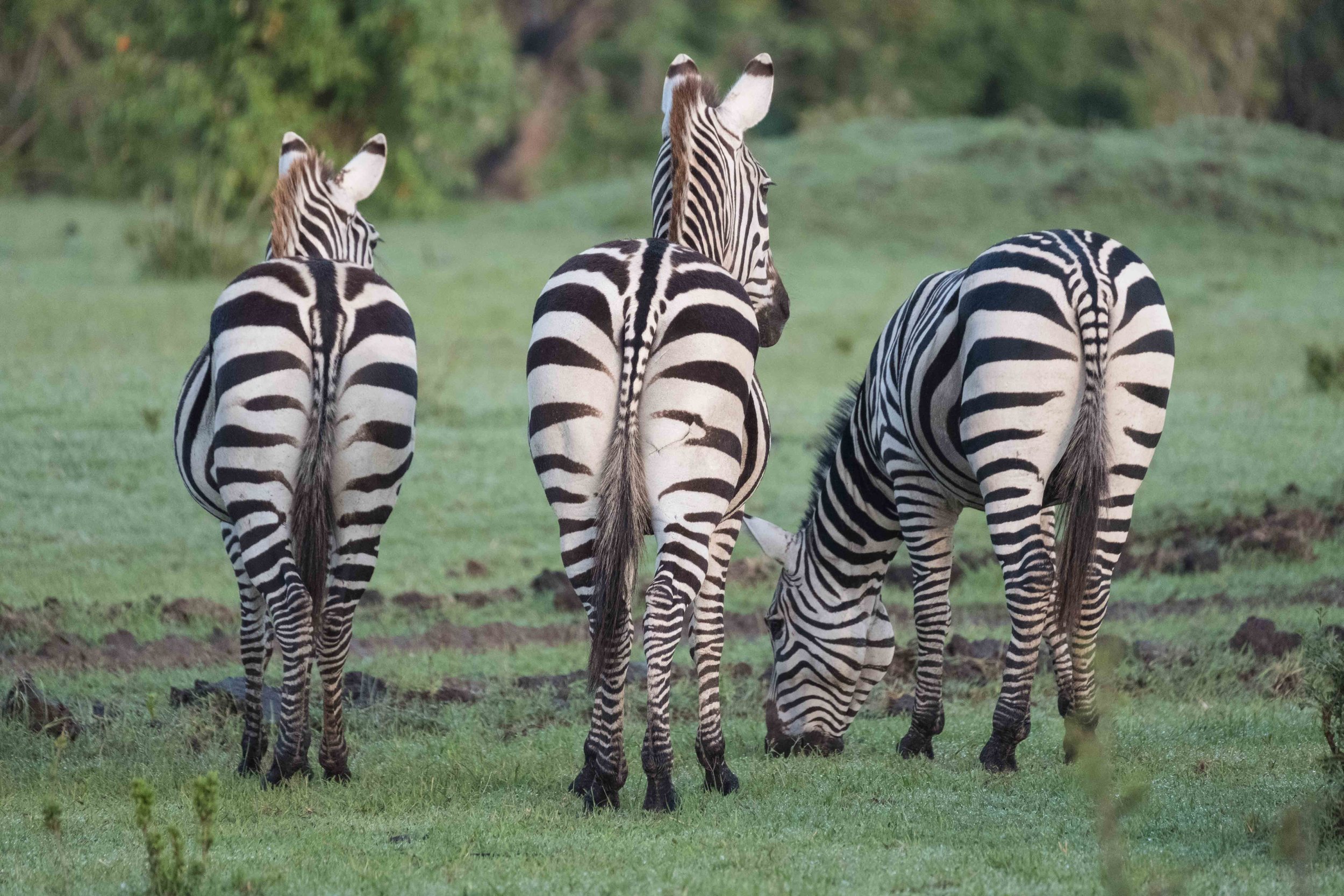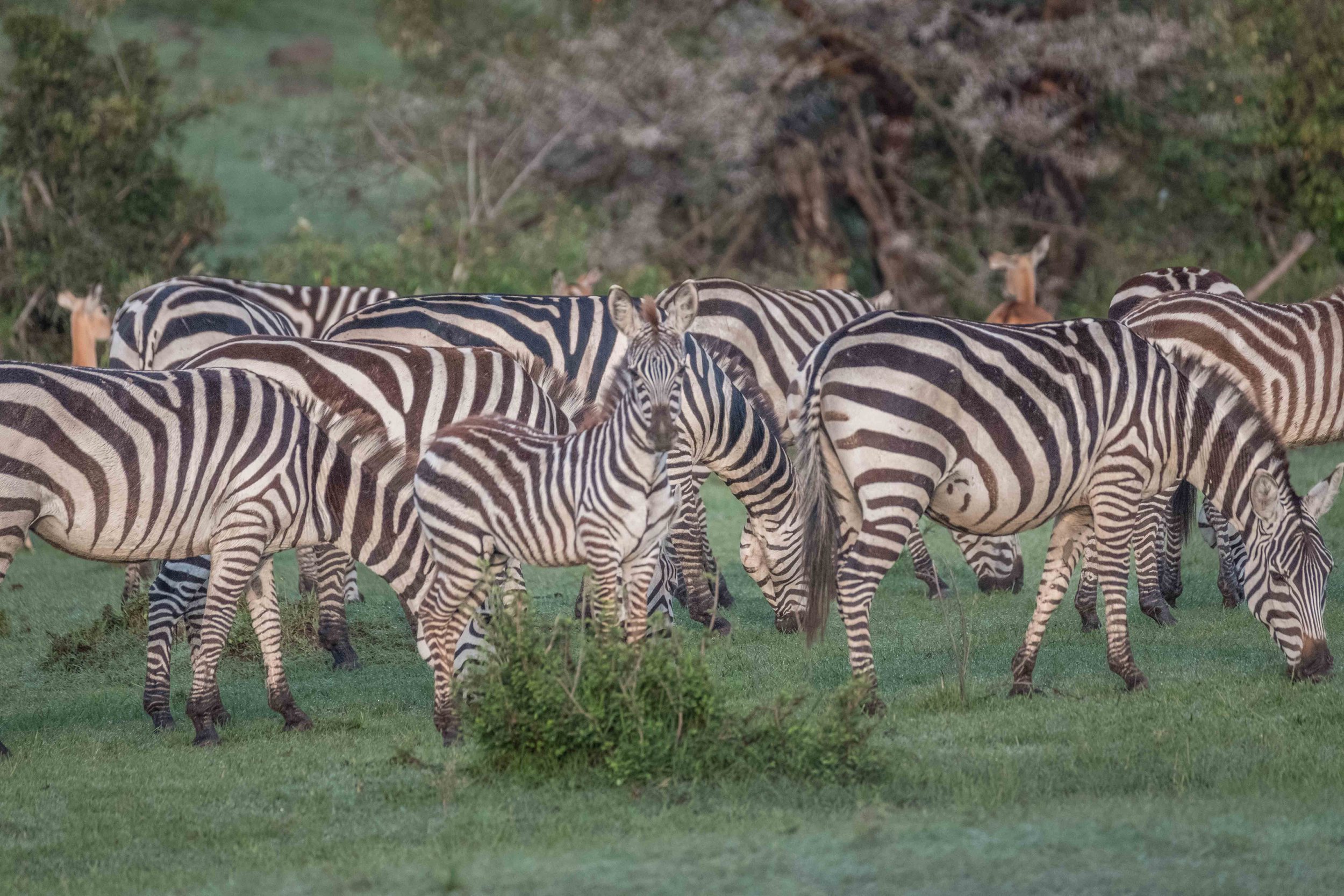A Horse of a Different Stripe
I asked the Zebra, “Are you black with white stripes? Or white with black stripes?’ And the zebra asked me, “Are you good with bad habits? Or are you bad with good habits? ‘“ - Shel Silverstein
Many readers were amazed and delighted to see the videos of the Grevy zebra birth in last week’s blog. Tonya Cole commented that she didn’t know there were different species of zebras. I’m sure she wasn’t alone so today’s story highlights the differences between the common zebra and the highly endangered Grevy zebra.
A group of Grevy zebras in Lewa Wildlife Conservancy in Lakipia Kenya
Common zebras on the Maasai Mara, Kenya
In the late 1970s, the global population of Grevy zebras was about 15,000. Today, current estimates are 2,500 - 3,000. In contrast, scientists estimate there are between 600,000 to 1,000,000 plains zebras living in the wild. If you look closely, you will see some obvious differences between Grevy and common zebras. All zebras look like they’ve been carefully decorated by a skilled artist with a brush dipped in black ink but, Grevy lines are thinner than the broader strokes on the common zebra.
Grevy zebras look more like striped mules than their stockier and shorter zebra cousins. Their stripes stop at their ribs while common zebra stripes wrap around their bellies.
I confess I’m besotted with the Grevys’ big fuzzy ears. They add character to their long narrow faces and sometimes make them look just plain goofy.
An orphan Grevy in a stable at Sarara Camp.
Grevy zebras are found in in the arid regions of Northern Kenya and Ethiopia. Unlike the common zebra, they can go for up to 5 days without water. Kenya’s recent drought was devastating to all zebras. The Grevy zebra often shares grasslands with Maasai cattle which increased competition for food. The drought severely degraded arid grazing areas adding to the pressure on the Grevy population. All zebras are important animals in the ecosystem. They eat dry, hardened grass tips that are too tough for other herbivores to digest.
Common zebras on the Maasai Mara
No question zebra patterns are beautiful. They have inspired fashion and home décor around the world. Check out my online store for an example!
There is a real reason for those stripes, however, they make great camouflage. Zebra foals can hide in plain sight. They are born with long legs and blend right in beside their mothers making it difficult for predators to see them.
Zebra stripes create such an optical illusion sometimes it’s challenging to know where one zebra stops and the next one begins!
I love all zebras, but Grevys have a special place in my heart. Conservationists are working hard to protect these beautiful animals with the narrow stripes and big ears. Please share their story. The more people who know about endangered Grevy zebras the greater the hope for their survival.
Want to add Grevy zebras to your home? Check out this popular throw pillow in my online store.
20'“x 12”












